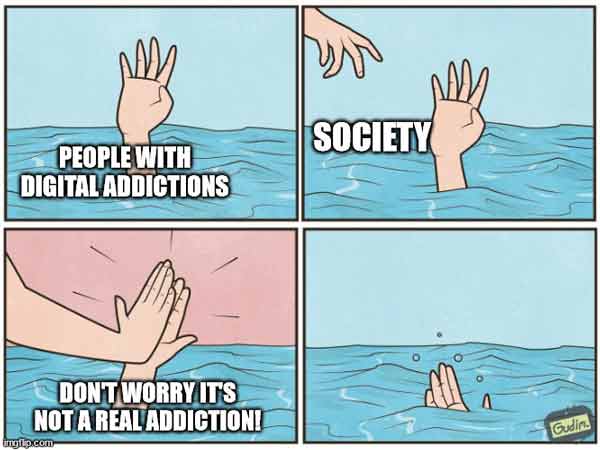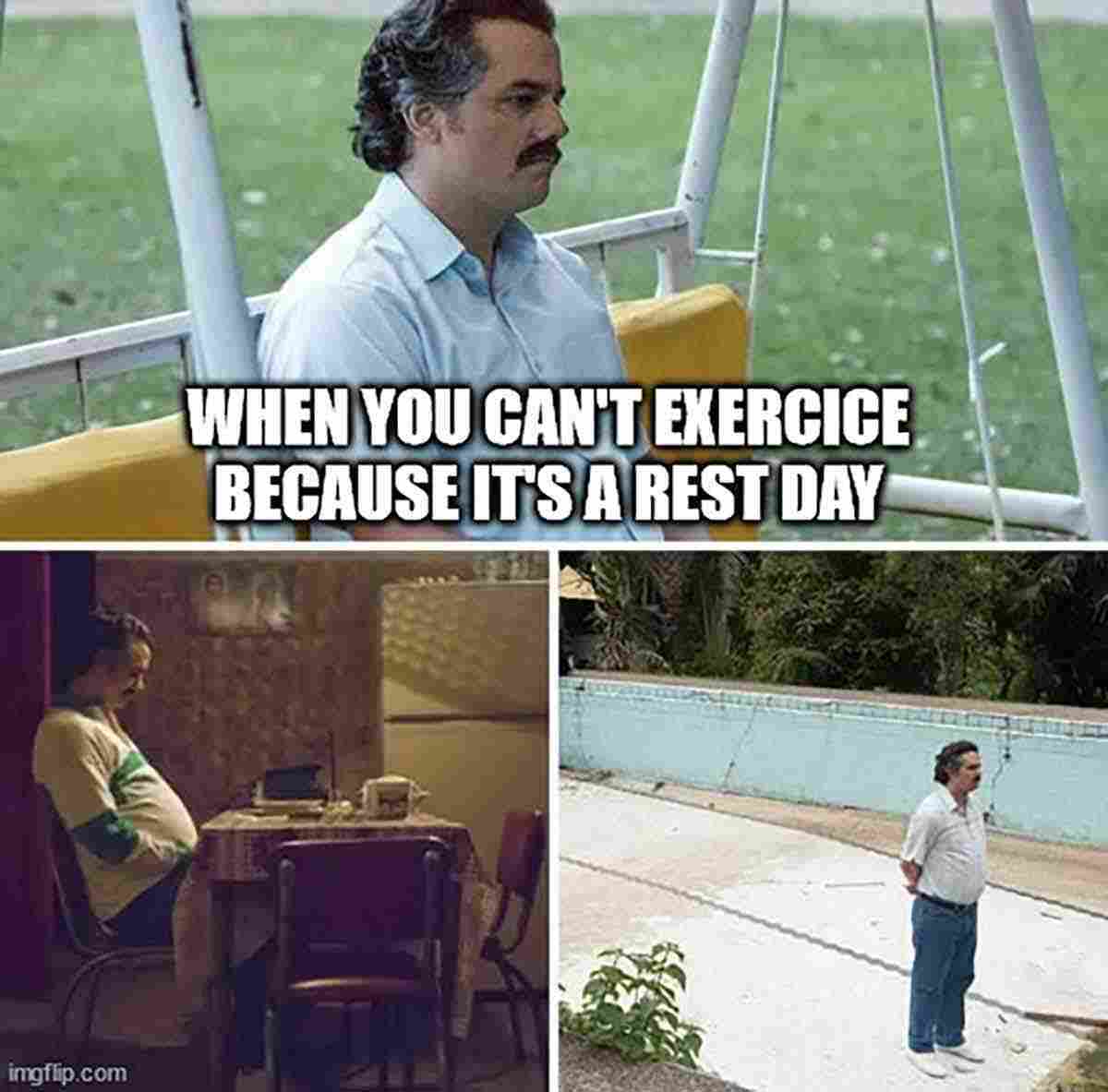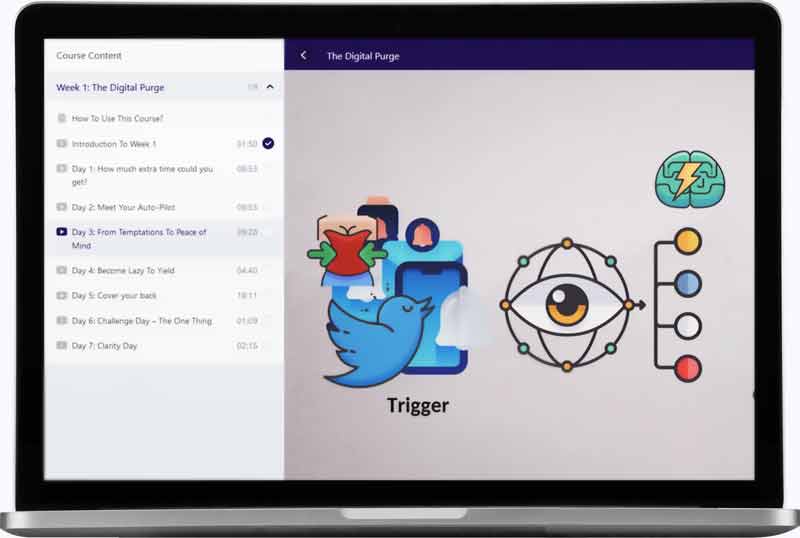Welcome to our digital detoxing series! A series on how to stop addictions toFortnite,Facebook,Instagram,porn,Netflix, Youtube,Tinder… Findall the posts about digital addiction. Today, let’s talk about how to quit the strava addiction.

- What’s the strava addiction?
- Addiction to strava, a “real” addiction?
- What’s considered strava addiction
- How much strava is too much?
- Some Health and fitness addiction facts & statistics
- Symptoms & Causes of the strava addiction
- Why is strava so addictive?
- Possible causes of strava dependency
- Symptoms, Causes and Signs of strava addiction
- Problems, impacts & bad effects of strava
- Some benefits of strava
- health problems
- impact on brain & mental health
- impact on relationships
- How to stop & quit your strava addiction
- Main steps and solutions to break the strava addiction
- Best strava blocker apps & functionalities
- where to seek extra help?
- Conclusion
- To Go Further
- How to help someone with strava addiction
- Best books about Health and fitness addiction
- Research about Health and fitness addiction
What is the strava addiction?
About strava
Strava is an online fitness tracking platform that allows users to track their runs, rides, and other workouts, compare performance over time, and join challenges with others.
Addiction to strava, a “real” addiction?
Officially an addiction?
First, let’s have a look to the DSM-5,the Diagnostic and Statistical Manual of Mental Disorders. Does it includes strava addiction?
No, Strava addiction is not listed in the DSM-5. The DSM-5 is the latest version of the Diagnostic and Statistical Manual of Mental Disorders, which is the primary diagnostic tool used by mental health professionals. It is used to classify and diagnose mental health disorders. Strava addiction is not considered to be a mental health disorder, so it is not listed in the DSM-5.
So what means “strava addiction”?
Strava addiction is a term used to describe an obsession with the popular fitness tracking app and website, Strava. People who suffer from Strava addiction often become obsessed with tracking and improving their performance on the app and may go to great lengths to achieve their goals. This can include excessively training, comparing their performance to others, and obsessing over small details.
What is considered strava addiction?
- 1. Spending an excessive amount of time on Strava and neglecting other activities.
- 2. Obsessively checking Strava for new activities or achievements.
- 3. Preoccupation with bettering your Strava records or those of others.
- 4. Feeling anxious or agitated if you’re not able to use Strava.
- 5. Feeling a sense of accomplishment from completing or beating Strava goals.
- 6. Becoming defensive when someone questions your Strava use.
- 7. Lying or hiding your Strava activities from others.
- 8. Feeling guilty or ashamed after spending time on Strava.
- 9. Feeling a need to constantly compete with others on Strava.
- 10. Making decisions based on your Strava activities or goals.
How much strava is too much?
There is no definitive answer to this question as it will depend on the individual. It is important to consider how much time you are spending on Strava in comparison to other activities and commitments in your life. If your Strava activities are taking up too much of your time and impacting other areas of your life, it might be time to take a step back and reassess your priorities.
Some Health and fitness addiction facts & statistics

There is limited research on the prevalence of health and fitness addiction. However, some studies suggest that it may affect up to 10% of the population.
Here are some statistics related to health and fitness addiction:
1. According to a study published in the Journal of Behavioral Addictions, 10% of gym-goers met the criteria for exercise addiction.
2. A study published in the International Journal of Mental Health and Addiction found that individuals with body dysmorphic disorder (BDD) were more likely to have exercise addiction. BDD affects approximately 2% of the population.
3. The National Eating Disorders Association (NEDA) states that excessive exercise is a common behavior among individuals with eating disorders, affecting up to 80% of individuals with anorexia nervosa.
4. A survey conducted by the International Health, Racquet & Sportsclub Association (IHRSA) found that 18% of gym-goers reported feeling guilty if they missed a workout, and 14% felt anxious or irritable if they couldn’t exercise.
It’s important to note that not all individuals who engage in frequent exercise or have a strong interest in health and fitness are addicted. Health and fitness addiction is characterized by compulsive and excessive exercise that interferes with daily life and causes physical and/or psychological harm.
Is the strava addiction widespread?
Strava has become a popular fitness tracking app among athletes, runners, and cyclists. Some users may become highly engaged with the app and feel a sense of attachment or dependence on it, but whether this qualifies as addiction may vary from person to person. It is important for individuals to be aware of their usage patterns and seek help if they feel like they are struggling to control their use of the app.
Symptoms, Causes and Signs of strava addiction
Why is strava so addictive?
Strava is a great way to track your progress, set goals, and compete with friends. It is also very easy to use and has a great user interface.
Additionally, it offers a great sense of accomplishment when you reach your goals and achieve your personal bests. The social aspect of Strava also helps to make it addictive, as users can compare their performance to others and compete against them.
Possible causes of strava dependency
- 1. Enjoyment of the Competition: Many people who become addicted to Strava enjoy the competition and sense of accomplishment that comes from tracking and comparing their performance against others.
- 2. Social Interaction: Strava provides a social platform where users can compare their running and cycling performance with friends and other athletes.
- 3. Goal Setting: Strava encourages users to set goals for themselves and provides them with the tools to track their progress.
- 4. Endorphin Rush: Exercise releases endorphins and provides a natural high that can be addictive.
- 5. Stress Relief: Exercise is an effective way to reduce stress and can be an important and rewarding part of an individual’s daily routine.
Signs & Symptoms of strava addiction
Now let’s see if you have the strava addiction problem.
- 1. You plan your route around Strava segments
- 2. You take pictures at the start and finish line of segments
- 3. You have a special outfit just for Strava rides
- 4. You constantly talk about Strava
- 5. You compare your stats with friends
- 6. You set yourself weekly goals on Strava
- 7. You check your Strava app every day
Problems, impacts & bad effects of strava: should you quit?

What are some benefits of strava
- 1. Motivation: Strava provides a range of motivational tools to help you stay on track with your fitness goals. You can set goals and track your progress, compare yourself with other users, and receive rewards for completing achievements.
- 2. Community: Strava provides an active community of runners, cyclists, and other athletes to connect with, keep each other motivated, and exchange advice.
- 3. Training Analysis: Strava allows you to track and analyze your workouts to gain insights into your performance. You can measure your speed, distance, elevation, and more.
- 4. Safety: Strava’s Beacon feature allows you to set up a safety net for your outdoor activities. You can share your location with a designated contact so that they can track your activity and come to your aid if necessary.
- 5. Convenience: Strava is easily accessible from any mobile device, so you can take your training with you wherever you go.
But at the opposite, what can be some strava addiction problems addicts suffer from?
general health problems
Strava can have a positive effect on your health in many ways. It can help to increase physical activity levels, which can lead to improved cardiovascular health, muscle strength and endurance, and overall well-being. It can also help to keep track of your progress and motivate you to reach your fitness goals.
Additionally, it can provide a social platform to connect with other athletes and share tips and ideas for improving your performance.
strava and sleep disorder
No, Strava, a fitness tracking app, does not have the ability to create sleep disorders or sleep problems. However, excessive use of any technology, including Strava, can lead to disrupted sleep patterns and potentially contribute to sleep problems. It is important to maintain a healthy balance between technology use and restful sleep habits.
strava affecting your brain & mental health: bad for brain and mental health?
Some effects of strava on your brain
- 1. Stress: Strava can increase stress levels in some people due to the constant need to compete or compare your progress or performance to others. This can lead to feelings of anxiety or depression if you don’t feel you’re measuring up.
- 2. Over-training: The allure of tracking every workout and setting personal bests can lead to an increased risk of over-training. This can lead to burnout, exhaustion, and even injuries.
- 3. Addiction: For some, the constant comparison and competition of Strava can lead to an unhealthy obsession and addiction. This can lead to poor diet, lack of sleep, and an unhealthy amount of time spent on the app.
- 4. Distraction and Injury Risk: The reliance on phones and other devices to track your workouts can be a major distraction. This can lead to dangerous situations, such as running into a car or tripping on the sidewalk.
Some effects of strava on your mental health
1. Emotional Overload: Strava can create an environment of competition, comparison, and even judgement. This can create an emotional overload, leading to feelings of anxiety and stress, which can be damaging to mental health.
2. Unhealthy Habits: Strava can encourage unhealthy habits such as overexertion and exhaustion. This can have a detrimental effect on your mental health, as it can lead to burnout and depression.
3. Lack of Connection: While Strava can provide a sense of connection and community, it can also make it harder to create genuine relationships. This can lead to feelings of loneliness and isolation, which can be damaging to mental health.
Does strava cause stress and anxiety?
For some individuals, using Strava to track their workouts and compare their performance with others can create a sense of pressure and anxiety. This may be especially true if they are using Strava to train for a specific event or goal, and feel the need to constantly improve and beat their previous records.
Additionally, seeing other people’s workouts and achievements on Strava can create feelings of comparison and competition, which may lead to stress and anxiety if the individual feels they are not performing as well as others.
However, it is important to note that not everyone will experience stress or anxiety from using Strava, and the platform can also be a helpful tool for motivation and accountability. It ultimately depends on the individual and their relationship with exercise and competition.
Can strava addiction lead to sadness and depression?

Yes, strava addiction can lead to sadness and depression, especially if someone becomes overly obsessed with their performance data and begins to base their self-worth on their Strava stats. This can lead to feelings of inadequacy, anxiety, and depression if they fail to meet their own expectations or compare themselves unfavorably to other Strava users.
Additionally, if someone is spending too much time on Strava and neglecting other important aspects of their life, such as their relationships or work, this can also contribute to feelings of sadness and depression. It is important to maintain a healthy balance and perspective when using Strava or any other fitness tracking app.
Dopamine and strava
Dopamine is a neurotransmitter that plays a role in the brain’s reward and pleasure centers. It is often associated with feelings of happiness, motivation, and satisfaction. Strava is a social fitness app that allows users to track their workouts, connect with friends, and compete with others. Using Strava can trigger the release of dopamine in the brain, as users may feel a sense of accomplishment or satisfaction from completing a workout, setting a new personal record, or receiving recognition from their peers. Research suggests that the social aspect of Strava can also contribute to the release of dopamine, as users may feel a sense of belonging and connection to others who share their fitness goals and interests.
strava effects on Focus, productivity, attention span, academic performance…
We can provide some information on how using Strava, a fitness tracking app, may affect focus, productivity, attention span, and academic performance:
Using Strava may have a positive impact on focus, productivity, and attention span by promoting regular exercise and physical activity. Exercise has been shown to improve cognitive function and mental health, which can lead to improved focus and productivity. However, it is important to note that excessive use of Strava or other fitness tracking apps can potentially become a distraction and hinder productivity.
Regarding academic performance, regular exercise has also been linked to improved academic performance, particularly in areas such as memory and attention. However, it is important to balance exercise with other academic responsibilities and not let it interfere with studying or completing assignments.
Overall, using Strava or other fitness tracking apps can have positive effects on focus, productivity, attention span, and academic performance, as long as it is used in moderation and balanced with other responsibilities.
A word about ADHD and strava
It’s possible that people with ADHD may interact differently with Strava, but there is no conclusive evidence to support this. However, individuals with ADHD may have difficulty with sustained attention and may be more impulsive, leading to a greater desire for immediate feedback and rewards. This could potentially lead to increased engagement with features such as the Strava leaderboard and challenges.
Additionally, some individuals with ADHD may benefit from the structured and goal-oriented nature of Strava, which may help them stay motivated and focused on their fitness goals. However, it’s important to note that everyone with ADHD is unique, and their interactions with Strava (or any other app or platform) will depend on their individual experiences and preferences.
affecting your relationships
strava and self-esteem
Strava can have both positive and negative effects on self-esteem, depending on how it is used and perceived by the individual.
Positive effects:
- 1. Motivation: Strava can be a great motivator for individuals to exercise more often and improve their fitness levels, which can boost self-esteem and confidence.
- 2. Social support: Strava provides a social platform where users can connect with like-minded individuals, share their achievements and receive support and encouragement, which can increase feelings of belonging and self-worth.
- 3. Goal-setting: Strava allows users to set goals and track their progress, which can provide a sense of accomplishment and boost self-esteem.
Negative effects:
- 1. Comparison: Strava’s leaderboard and segment rankings can create a competitive environment, which can lead to negative comparisons and feelings of inadequacy if an individual feels they are not performing as well as others.
- 2. Obsession: Strava’s tracking and analytics features can make individuals obsess over their performance and numbers, leading to feelings of anxiety and stress if they do not meet their goals.
- 3. Burnout: Strava’s constant tracking and pressure to perform can lead to burnout, which can negatively impact self-esteem and mental health.
Overall, Strava can be a useful tool for boosting self-esteem and motivation, but it’s important to use it in a healthy way and not let it become an obsession or source of negative comparison.
strava addiction leads to isolation and loneliness?
.jpg)
Yes, it is possible for Strava addiction to lead to isolation and loneliness. When individuals become overly focused on their Strava activities, they may prioritize their workouts and training over social interactions and relationships. This can lead to feelings of loneliness and isolation as they may miss out on opportunities to connect with friends and family.
Additionally, if individuals become too fixated on their Strava performance and achievements, they may feel pressure to constantly improve and compare themselves to others, leading to feelings of inadequacy and social disconnection.
It is important for individuals to maintain a healthy balance between their Strava activities and other aspects of their life, including social interactions and relationships. Seeking support from friends, family, or a mental health professional can also be helpful in addressing any negative impacts of Strava addiction on their well-being.
Effects of strava on your relationship
Positive effects of Strava on your relationship:
- 1. Motivation: Strava can motivate you and your partner to stay active and healthy together.
- 2. Support: You can support and encourage each other’s fitness goals and achievements through Strava.
- 3. Shared experiences: You can share your fitness experiences and adventures with your partner, creating a stronger bond.
- 4. Accountability: Strava can help hold you and your partner accountable for your fitness routines and goals.
Negative effects of Strava on your relationship:
- 1. Competitive nature: Strava can create a competitive environment, which can sometimes cause tension and conflict in a relationship.
- 2. Obsessive behavior: Strava can lead to obsessive behavior, causing you and your partner to prioritize fitness over other important aspects of your relationship.
- 3. Comparison: Strava can lead to comparing your fitness achievements with your partner’s, which can lead to feelings of inadequacy or resentment.
- 4. Time constraints: Strava can take up a lot of time, leading to less quality time spent together as a couple.
How To Stop & quit Your strava Addiction
Finally you think you are addicted to strava and you are wondering how to quit it? How to break and overcome your cravings for strava?
Here are the best solutions, steps, supports, resources and help you can get to treat your strava addiction.
Main steps and solutions to break the strava addiction
- 1. Acknowledge that you have a problem: The first step to getting rid of a Strava addiction is to recognize that you have a problem. Admit that your use of Strava has become excessive and it is impacting other areas of your life.
- 2. Set realistic goals: Make a plan to reduce your time on Strava. Set realistic goals that are achievable and track your progress.
- 3. Take a break: Take a break from Strava and give yourself time to reset. Use this as an opportunity to focus on other activities, such as getting outside and being active in the real world.
- 4. Find alternatives: Find alternative activities or hobbies to replace the time spent on Strava. Spend time with friends or family, take up a new sport or hobby, or volunteer in your community.
- 5. Seek help: If your addiction is affecting your life in a major way, consider seeking professional help. Talk to a therapist or counselor to help you find new ways to manage your time and emotions.
Actually, that’s what most documentation out there is about… However, quitting a digital addiction can be a bit trickier than that.
So our team, after testing many ways, designed a bulletproof way to overcome them. Here are some clear and practical steps that are very powerful to quit a digital addiction, including strava:
1. Purge temptations: Get rid of strava
First, cleaning your life from temptations is much easier than resisting to them. Disable or delete your strava accounts, change the password and hide it somewhere you can’t access easily, keep your phone / computer far away… Out of sight out of mind.
Here is a video from our course the The Digital Purge. on how to add resistance to your temptations, so you become so lazy to engage with them that you give them up:


